Overview and selection of furniture hinges without tie-in
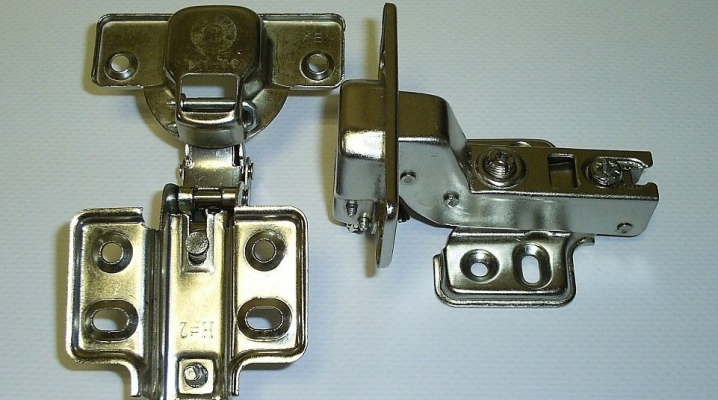
Furniture hinges without cut-in - universal and other models without milling have gained wide popularity due to their high installation speed and ease of use. Their main purpose is to fix suspended doors in cabinet cases, but there are other areas where such structures are in demand. It is worth learning in more detail about what varieties exist, how the installation of overhead quick-assembly loops in furniture takes place.
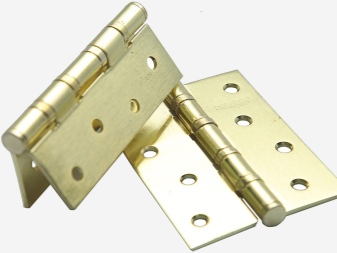
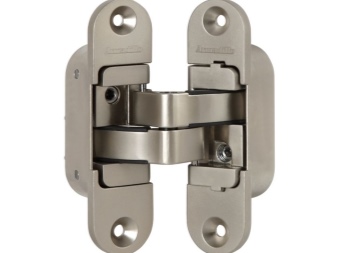
Description
Furniture hinges without a tie-in are a kind of fittings that do not require milling on the sash surface. These include both fasteners for quick installation and classic, with a stationary fixation. If a conventional hinge requires a special recess to be punched out, completely ready-made structures are used here, easily installed over the canvas.
Overhead products are useful where the thickness of the material is too thin to be subjected to additional milling.
In the context of in-line assembly of furniture, such fittings provide a significant saving in time spent on performing the necessary technological operations. In addition to overhead, there are other types of loops that do not require a tie-in.
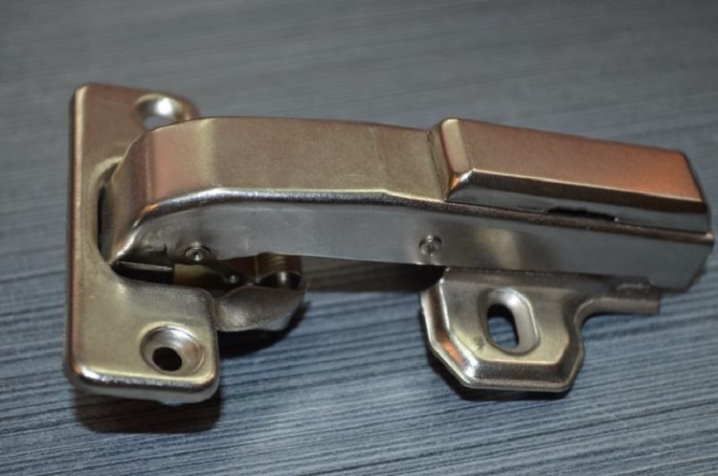
Areas of use
The use of furniture hinges without a tie-in may be due to the type of product design or the materials used. These can be thin doors in chipboard or plywood cases, other options in which drilling of holes is a certain difficulty. Special non-cut hinges are produced for glass elements; you don't even need to drill holes for them. For aluminum structures, fittings are often supplied immediately complete with a furniture profile.
The use of such fasteners is most in demand when assembling cabinet furniture, built-in and ordinary, free-standing. Options without drilling are mounted as clamps, securing the blade in a kind of groove. They are in demand when assembling display cabinets with a large glazing area.
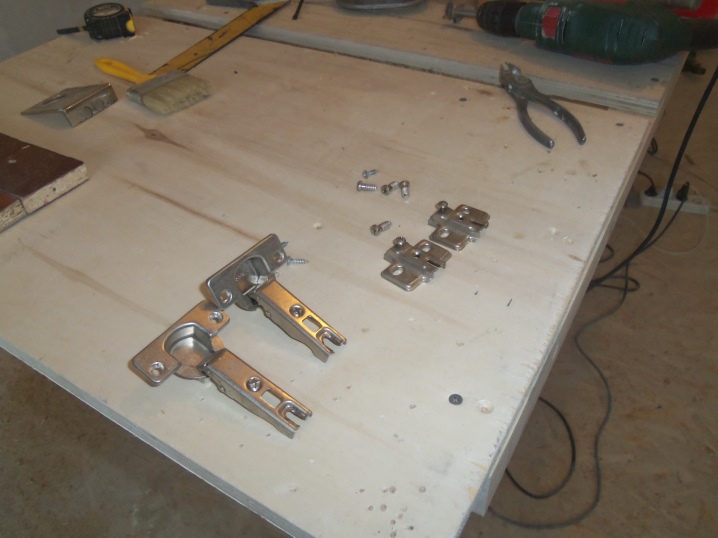
Species overview
With the expansion of the range of available furniture products, hinges for its installation have also received a certain development. Universal non-cut models can be installed without milling. They are focused on wood-based panel materials, usually with a decorative finish - in which the sampling of a part of the surface is a serious problem.
In some cases, installation is also possible without drilling - this is convenient for quick replacement of facades or other furniture elements.
Hinges that do not require a tie-in are usually classified according to the type of design and the purpose of the product.
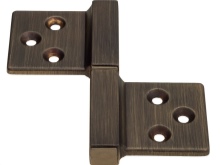
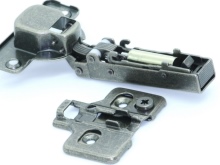
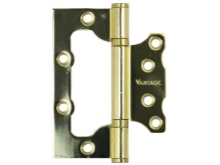
By design
Features of the structure of furniture fittings are the main feature by which it is customary to divide it into categories. The most popular hinge options that do not require a tie-in should be considered in more detail.
- Eight-hinged cup. They are considered a universal option for furniture assembly. They have a wide range of standard sizes.
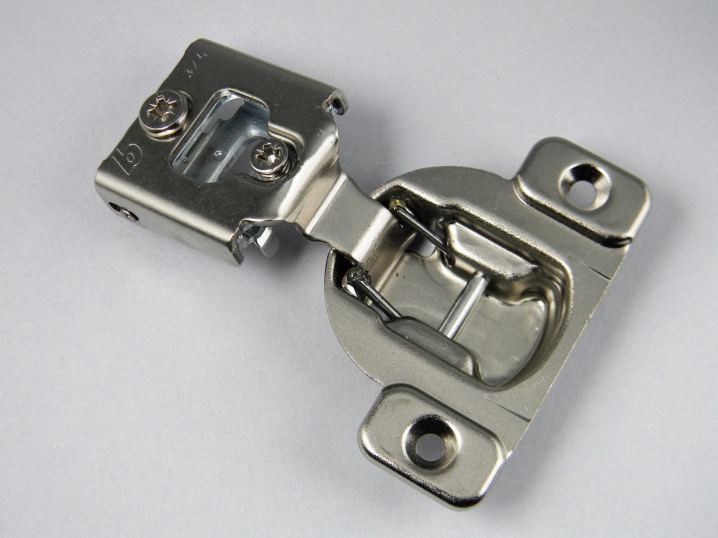
- Overhead card. They can be standard and curly, externally they represent a shortened version of the piano loop. Simple and easy to install. There is a secretory version with rounded shapes - for valves that open in a horizontal plane.
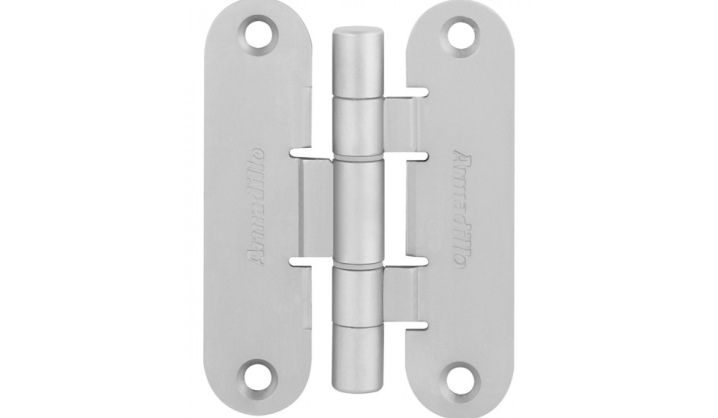
- Articulated. Overhead hinges for wide opening angles and different types of furniture. The best option for products of small thickness. The insert for the cup is not made, installation is carried out overhead.
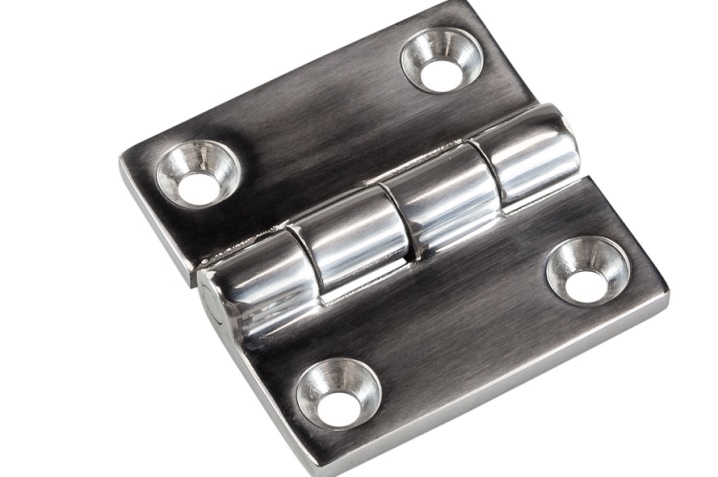
- Four-hinged cup. In the overhead design, they have several options for attaching the counter element. Slide-on uses a locking screw, the protruding part of the striker fits into the shoulder. Clip-on is a model for quick installation, doors on such a fastener can be easily removed and mounted without the use of tools. Key-hole has a keyhole-shaped opening.
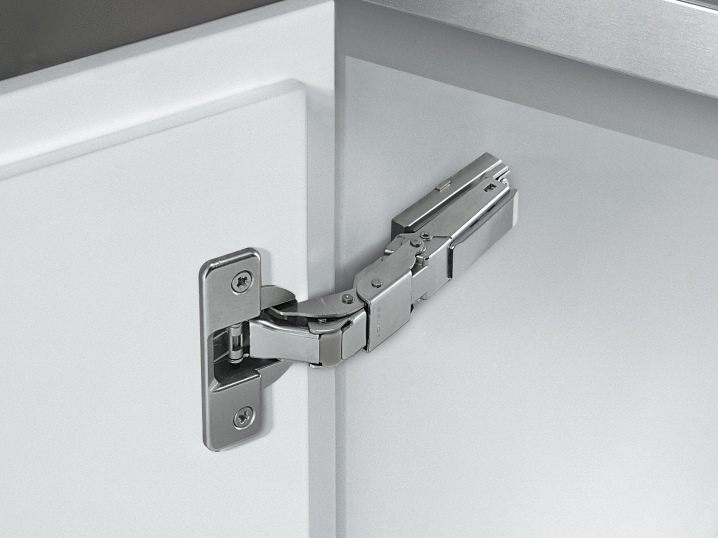
- Inverse. Overhead hinges of this type have the widest opening range - up to 180 degrees, they are also informally called "crabs", "crocodiles". Such transformers are used in complex furniture structures, they can be installed without a tie-in.

- Mezzanine. They are used in cabinets with horizontal arrangement and vertical opening. They allow you to lift and hold the furniture facade in a given position. The design has additional locking elements and springs. The opening angle varies from 75 to 110 degrees.
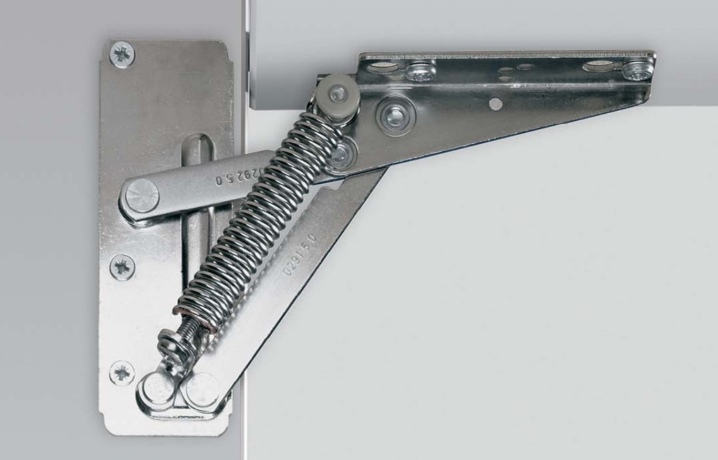
- For glass structures. They have a special groove into which the canvas is inserted; they are attached to the surface of the cabinet in an overhead way, on a hinge.
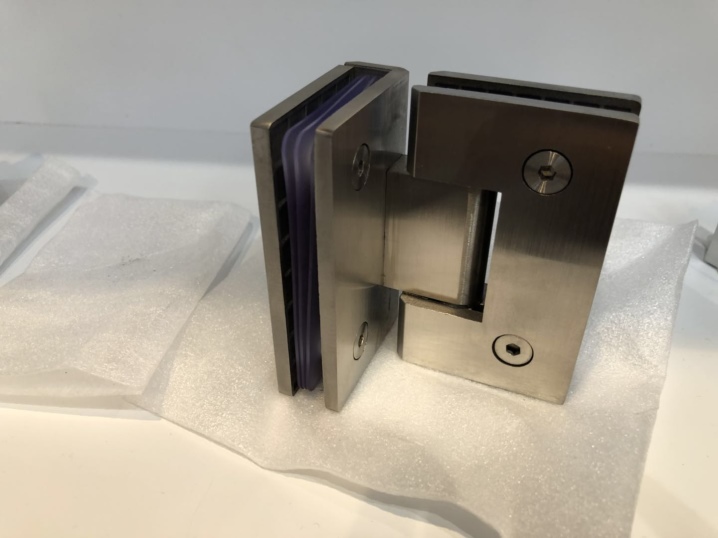
These are the main options for furniture hinges, when installed, they do not require an additional cutout into the facade.
Of course, their bearing capacity and ease of use are not always superior to those of models with other mounting methods.
But even home craftsmen who do not have special training can fix such elements on cabinet doors or their cases.
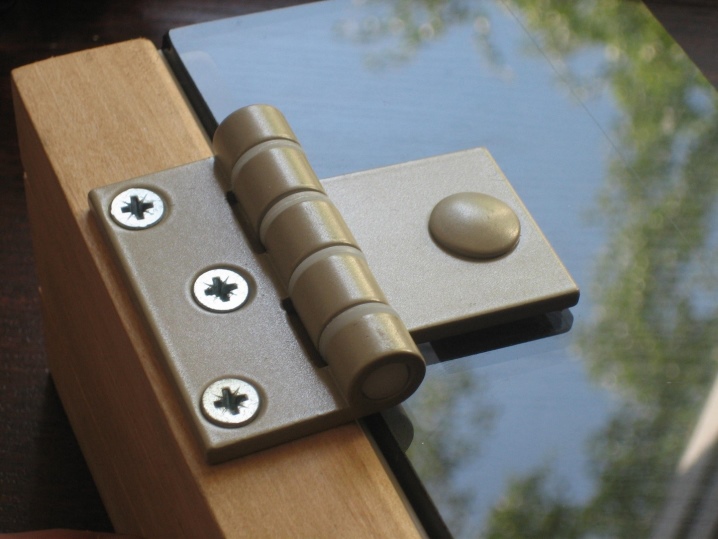
By appointment
The classification of all existing hinges installed without a tie-in takes into account the purpose of such products. Among them are the following.
- Furniture hinges. With their help, frame and frameless facades, other swing elements are mounted, in which it is quite difficult to make a hole without damage.
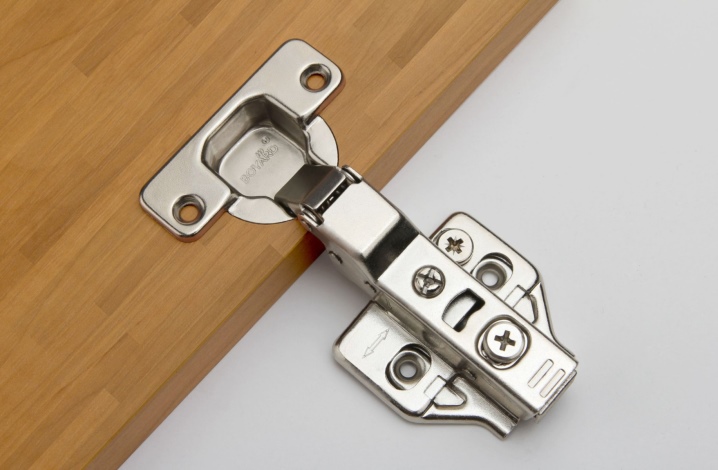
- Interior. The elements necessary for creating partitions in the interior are fixed on them. These can be various screens, interior entrance doors. Particularly stringent requirements are imposed on the level of permissible loads in the structure. It is important that the hinges are able to withstand them.
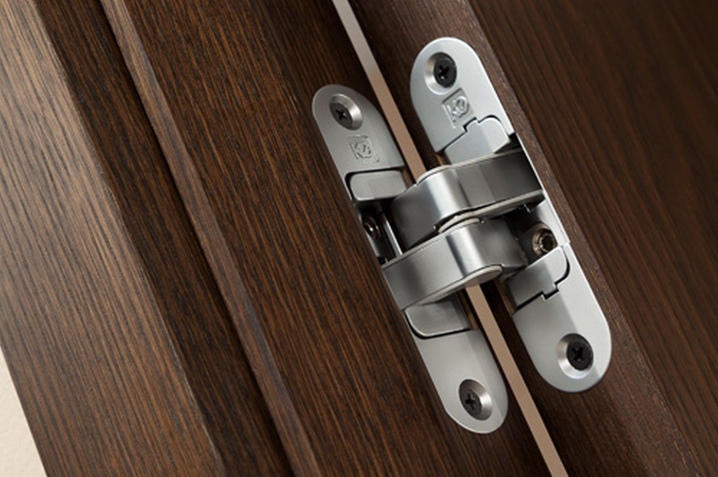
- Street and display cases. They are most often used for the installation of wickets, gates, doors; they imply the ability to open in the range from 90 to 180 degrees.

Furniture hinges are the most compact of the options presented. Their recommended loads rarely exceed 20 kg.
Selection Tips
When choosing hinges mounted without a tie-in, you should pay special attention to the weight of the structure - the higher it is, the more fittings you will need. The lightest furniture fronts are hung on 2 hinges. More massive - by 3, located at the same distance from each other. Heavy glass or wood-made doors require pairing at the top and bottom.
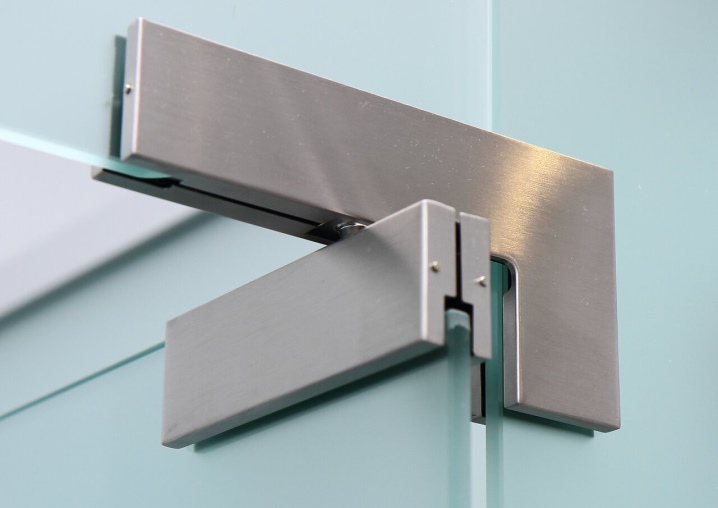
In addition, the location of the artboard matters. There are special left, right, and universal options.
If you have to carry out the work yourself, it is better to purchase the latter, they will not allow you to get confused during the work. The material of manufacture also matters. The most popular ones are made of stainless metals. They are more expensive than ordinary steel ones, but they are not afraid of corrosion, moisture and steam, they have a more aesthetic appearance. Brass products have an attractive golden hue. Stainless steel gives the hinges strength, looks aesthetically pleasing, and ensures a long service life.
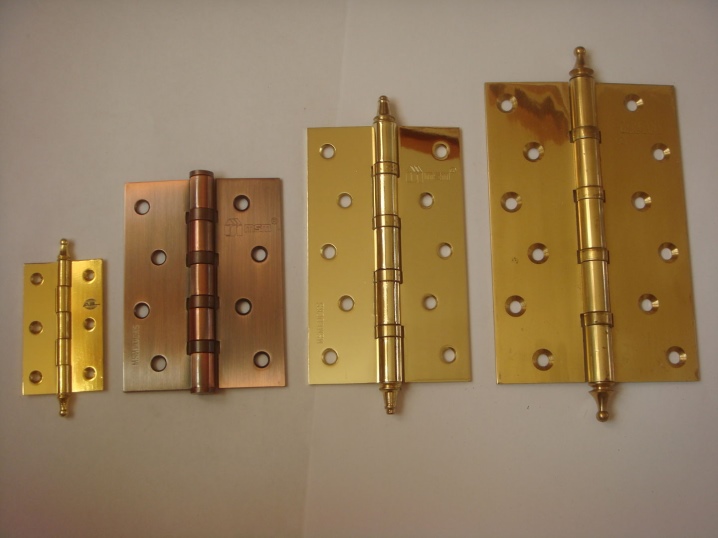
Installation
The easiest way is to install the hinges yourself without a tie-in type. Standard furniture options are 80 mm, 105 mm in size, but they can be with other parameters. The procedure will be as follows.
- Mark the door. Usually, a distance of 25 mm from the top and bottom edges is maintained.
- Attach a loop. Mark the areas where the screws are located.
- Carry out similar actions on the furniture frame.
- Fasten the hinge with self-tapping screws on the sash surface.
- Carry out the installation. Check the geometry is correct, eliminate backlash, if present.
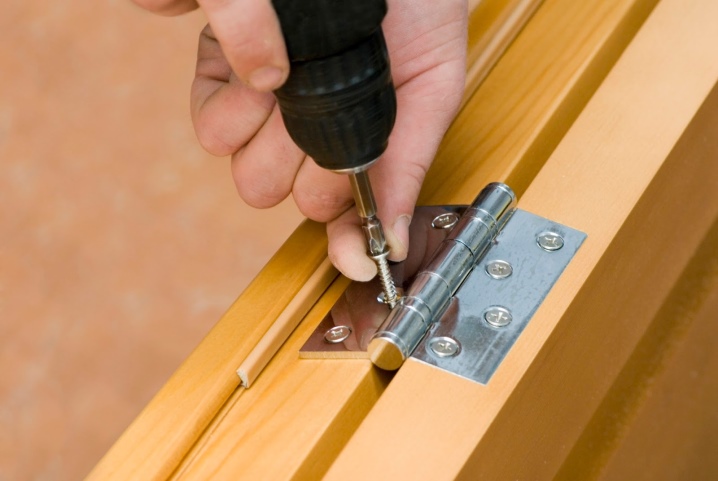
Given these recommendations, you can install furniture hinges without a tie-in when repairing or making home furnishings yourself... For work, the master will only need a level, a screwdriver, a ruler and a pencil for marking, fittings of the desired size, and all work will take a minimum of time.
How to install a furniture hinge without routing, see below.













The comment was sent successfully.